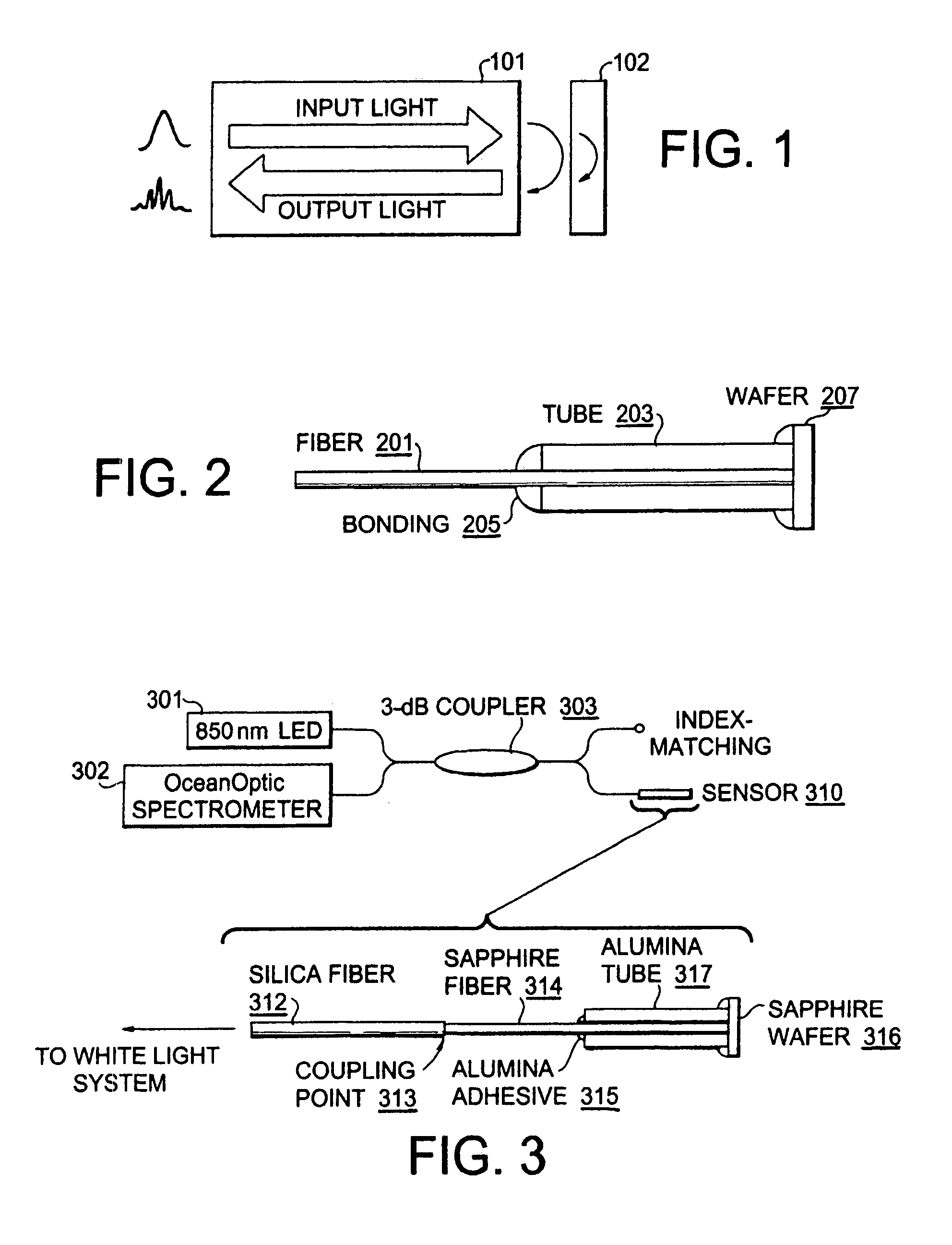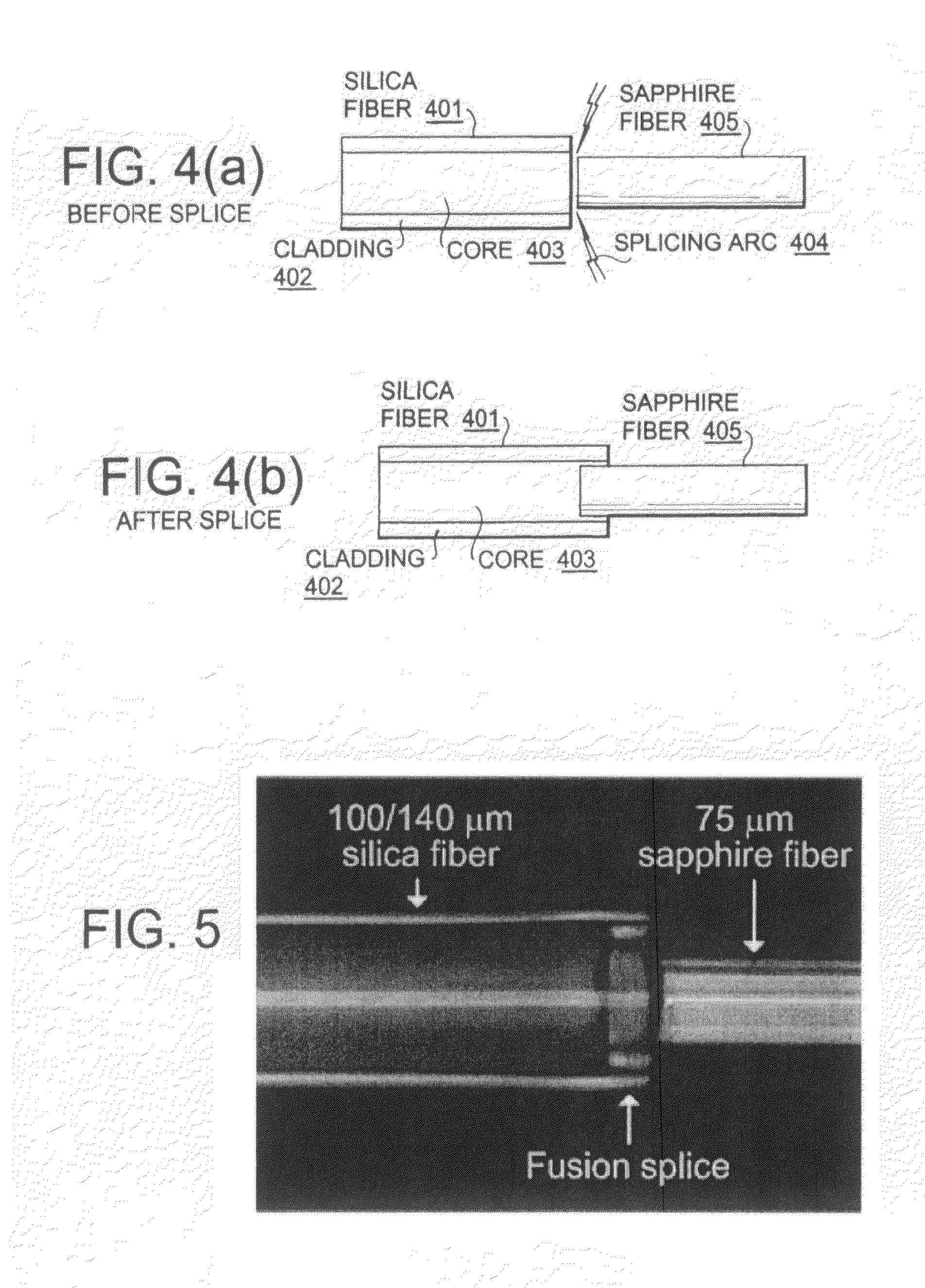Fabrication of miniature fiber-optic temperature sensors
- Summary
- Abstract
- Description
- Claims
- Application Information
AI Technical Summary
Benefits of technology
Problems solved by technology
Method used
Image
Examples
Embodiment Construction
[0034]A preferred embodiment of the present invention will be set forth in detail with reference to the drawings, in which like reference numerals refer to like elements or operational steps throughout.
[0035]The present invention is directed to the design and detailed fabrication process of fiber-optic temperature sensors. When properly fabricated, the sensors have been demonstrated to be well-suited for reliable temperature monitoring even in the harshest environments.
[0036]As illustrated in FIG. 1, the sensing mechanism is based on a wafer 102 whose surfaces create a Fabry-Perot interferometer. A fiber 101 can be used to deliver light to the wafer 102 and receive the reflected signal from which the wafer's optical thickness (OT, product of physical thickness, d, and refractive index n) can be obtained by white-light interferometry. Since both d and n have thermal dependences, OT can serve as an excellent indicator of environmental temperature. The sensor can be made of a variety o...
PUM
 Login to View More
Login to View More Abstract
Description
Claims
Application Information
 Login to View More
Login to View More - R&D
- Intellectual Property
- Life Sciences
- Materials
- Tech Scout
- Unparalleled Data Quality
- Higher Quality Content
- 60% Fewer Hallucinations
Browse by: Latest US Patents, China's latest patents, Technical Efficacy Thesaurus, Application Domain, Technology Topic, Popular Technical Reports.
© 2025 PatSnap. All rights reserved.Legal|Privacy policy|Modern Slavery Act Transparency Statement|Sitemap|About US| Contact US: help@patsnap.com



